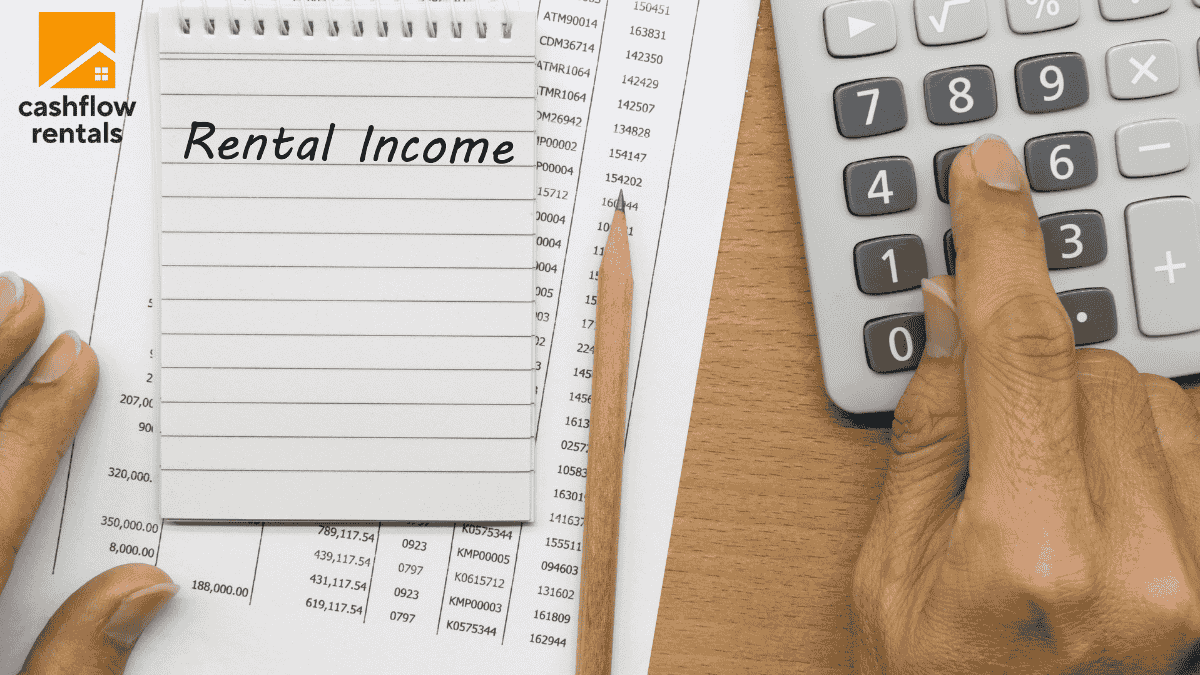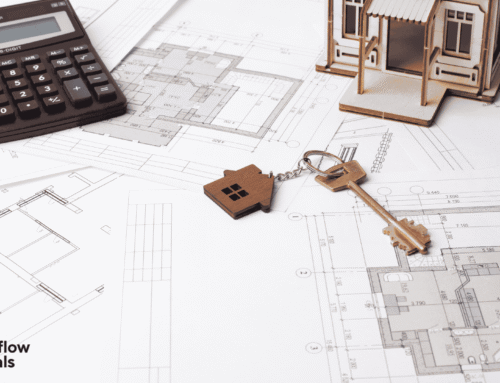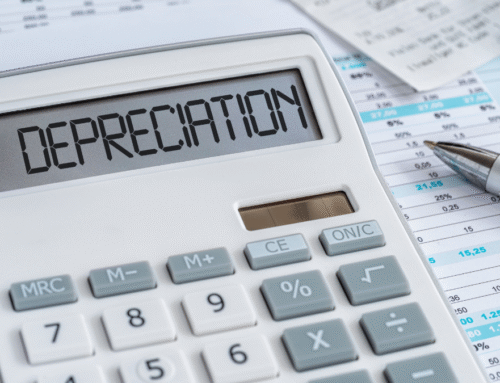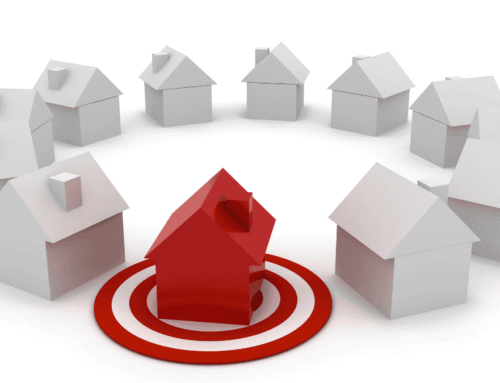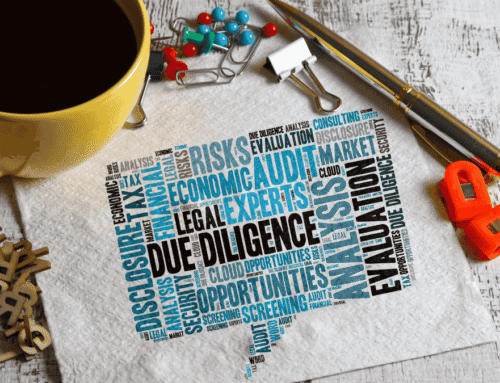Rental Property Calculator
Calculate Cash Flow, ROI & Investment Returns and More for any Rental Property
Use my free rental property calculator to calculate your rental property cash flow, ROI, cap rate, cash-on-cash return, DSCR ratio, and investment returns for any rental property investment. Make sure you enter your own numbers into all of the fields, even if its zero.
Try our other calculators
- Rental Property Depreciation Calculator: Work out the exact tax deductions for depreciation for your rental property.
- DSCR Calculator: Quickly check if a rental property’s income qualifies for a DSCR loan.
- DSCR Loan Rates Calculator: Get estimated DSCR loan rates based on your deal and borrower profile.
- DSCR Cash Out Refinance Calculator: Work out your max cash out proceeds from your current rental property.
Advanced: Appreciation, Growth, Taxes & Exit
Long-Term Estimates (at Sale)
Considerations When Calculating Rental Property Cash Flow and Returns
I’ve built a portfolio of over 120 rental properties in the U.S., so you might say I’ve learned a thing or two about how to underwrite a deal. Today, I help other investors build rental property portfolios in the United States, and I see a lot of the same mistakes from new investors when it comes to calculating their cash flow and returns. In this section, I’ll cover some of the most important lessons I’ve learned over the past 10 years as an active rental property investor, and you’ll learn the exact strategy I use to underwrite rental property investment for cash flow. Hint: it’s not as complicated as you might think.
JOIN MY VIP PRIORITY INVESTOR LIST
Get the Best Off-Market Investment Properties Delivered Directly to Your Inbox Every WeekYES! ADD ME TO THE PRIORITY INVESTOR LIST
Set Realistic Expectations – Hope for the Best, Plan for the Worst
Let’s start at the beginning. I see a lot of newbie investors turn to real estate for the cash flow. That’s not a problem in and of itself. Cash flow is the life blood of rental property investing, but you need to be realistic. First, if you’re investing in real estate for the $300/month cash flow check, forget it. There are safer, simpler investment strategies and assets that’ll do that for you, without all the headaches that comes with owning and managing real estate.
This is how I view it after 120+ deals. I’m looking to accumulate a portfolio of self-funding assets. You don’t get rich in real estate by collecting $300 checks. You get rich because the cash flow pays for your property over time, and the assets appreciate in value. With that in mind, I allocate 100% of my cash flow to reserves for the first 60 months of ownership. That means no owner draws. Treat your rental property like an asset, not an ATM. Trust me, when those unexpected repair bills and vacancies roll in and you have plenty of cash on hand to deal with it, you’ll thank me!
Know the REAL Cost of Owning Rental Properties – It’s More Than You Think
Most people think allocating a percentage of your income to various costs such as repairs, vacancies and CapEx is enough. While that’s a good start, I can guarantee you that you’re probably not accounting for everything. Take your repair reserves for example. Most folk will allocate say 10% of gross rents. That’s fine as a baseline, but have you considered the age of the property, the current condition, the neighbourhood, and the tenant base? All of these factors will definitely have an impact on how much you’ll really be spending on maintenance. Older properties in low-income neighbourhoods will cost you more to own. Cheap isn’t always good!
The same can be said for all of your cost inputs. Some neighbourhoods have higher vacancy rates. Some property managers charge a ton of additional fees for everything from posting notices to opening mail. What about the major CapEx items? Did you get a sewer scope and a roof inspection? how much life is left in the roof? Are you allocating enough cash flow to pay for a replacement in 5, or 10 years. It all adds up and can decimate your cash flow.
Understand Rental Property Calculation Terminology and ‘Rules’
Here’s a little glossary of real estate investing terms to get familiar with when calculating cash flow and returns on a rental property.
The 1% Rule
The 1% rule is a quick, back of a napkin calculation you can use to determine whether a rental property is likely to produce positive cash flow. You’re looking for 1 months’ rent to be about 1% or higher of the purchase price (or after repair value if you’re renovating).
Example: I own an investment property in Kansas City that I paid $175,000 for. The monthly rent is $1,695. That gives you 0.97% (1,695 / 175,000). While this property didn’t quite make the 1% rule, it still cash flows really well because the property taxes in this case are very low (<$500/yr). This is a good example of why the 1% rule is just a guideline, not gospel.
The 2% Rule
The 2% rule in real estate is exactly the same as the 1% rule, it’s just more conservative for investors who are truly focussed on maximum cash flow. You’re looking for 1 month’s rent to be about 2% of the purchase price or after repair value (ARV). I don’t use the 2% rule. In my experience, if a property fits the 2% rule then you’ve either found an absolutely killer deal, or you’re buying in a rough neighbourhood. 9 times out of 10 it’s the latter.
Rent to Price Ratio
The rent to price ratio is a metric real estate investor use to assess the cost of a property relative to the gross rental yield. To calculate the rent to price ratio you take the property value (purchase price or ARV), and divide that by the annual rent.
Example: Using my rental property in Kansas City again as an example, the purchase price was $175,000, and the gross annual rent is $20,340. So, the rent to price ratio is 8.6.
For us real estate investors, we’re looking for a low rent to price ratio. That indicates the price is relatively low compared to the rental income. A lot of real estate investors look for deals with a rent to price ratio of 10 or lower, indicating that prices are low relative to rental yields. For reference, the average rent to price ratio across the U.S. as a national average is about 15.
The 50% Rule
The 50% rule is another rough guideline metric you can use to very quickly assess whether a rental property will cash flow. Again, it’s just a headline screening tool to quickly determine if a property warrants a more detailed analysis. You’re looking to see of your operating costs before mortgage payment (property taxes, property management, insurance, repairs, vacancy, and capex) equate to 50% or less of the gross rental income.
Example: With gross rents of $2,000 and total operating costs of $900, a property would fit the 50% rule at 45%.
The 70% Rule
The 70% rule is used by house flippers to quickly calculate whether a potential value-add renovation project might be profitable, and to work out their maximum offer. Working out the 70% rule requires an understanding of potential renovation costs. Investors are looking to see if the asking price and repair costs are less than 70% of the after repair value (ARV).
Example: If the ARV is $300,000, the combined purchase and renovation cost should not exceed $210,000 (300,000 * 0.7). If the estimated cost of renovation is $100,000, then the maximum offer for that property would be $110,000 (210,000 – 100,000).
DSCR Ratio
DSCR stands for Debt Service Coverage Ratio. I use this a lot for my own rental properties, and when we’re helping other investors buy turnkey investment properties in the U.S. The DSCR ratio is used by mortgage lenders to qualify a rental property for a DSCR loan. The lender is looking at the gross rental income relative to the monthly mortgage payment, including: Principal, Interest, Taxes, Insurance, and HOA (PITIA).
Example: If gross monthly rent is $1,250, and PITIA is $1,000, then the DSCR ratio is 1.25. Lenders are generally looking for a DSCR of 1.0 or higher. The higher the DSCR, the better rate and terms you might get offered. You can use my DSCR calculators to work out the DSCR for any rental property.
Capitalization Rate (Cap Rate)
Cap rate, or capitalization rate, is a percentage metric real estate investors use to compare investments, and determine return and risk. Higher cap rates suggest a potentially higher return on investment, but also indicate a bigger risk. Cap rate is calculated by dividing the property’s annual Net Operating Income (NOI) – gross rents less operating costs – by the purchase price, ARV, or market value.
Example: If a property’s NOI is $30,000 per year, and the purchase price/value is $350,000, the cap rate would be 8.6% (30,000 / 350,000). Personally, I’m wary of rental properties with cap rates above 10%. In my experience, that indicates a risky investment.
Cash-on-Cash Return
Cash-on-cash return measures the annual pre-tax cash flow a property produces relative to the actual cash you invested (down payment, closing costs, initial repairs). It’s a quick way to compare deals with different leverage.
Example: You invest $50,000 total cash into a rental that throws off $5,000 in annual pre-tax cash flow. Your cash-on-cash return is 10% ($5,000 ÷ $50,000).
Gross Rental Yield
Gross rental yield looks at the property’s top-line income versus its value. Calculate it by dividing annual rent by the purchase price (or market value/ARV). It ignores expenses, so use it as a fast screen before deeper analysis.
Example: $1,500/month rent = $18,000/year. On a $300,000 purchase, gross yield is 6% ($18,000 ÷ $300,000).
Vacancy Rate
Vacancy rate is the percentage of time (or units) your property sits empty and generates no rent. Build a realistic vacancy assumption into your underwriting to avoid overestimating income.
Example: If a unit is vacant for 1 month out of the year, that’s an 8.3% vacancy rate (1 ÷ 12).
After Repair Value (ARV)
ARV is the estimated market value of a property after all planned renovations are complete. It’s crucial for flips, BRRRR deals, and hard money/DSCR underwriting.
Example: You buy a fixer for $200,000 and budget $40,000 in repairs. Recent comparable sales support an ARV of $300,000 once finished.
Capital Expenditure (CapEx)
CapEx are big-ticket, infrequent costs that extend the life of the property, think roofs, HVAC, water heaters, windows, and major exterior work. Unlike routine repairs, set aside a monthly reserve so these costs don’t wreck cash flow when they hit.
Example: A $12,000 roof every 15 years is about $67/month in CapEx reserve ($12,000 ÷ 180 months).
Net Operating Income (NOI)
NOI is the income the property produces before debt service. Start with gross rents, subtract operating expenses (taxes, insurance, management, maintenance, utilities you pay, and an allowance for repairs/turnover). NOI excludes mortgage principal and interest (and typically excludes CapEx).
Example: $24,000 annual rent minus $8,000 in operating expenses = $16,000 NOI.
Property Taxes
Property taxes are set by local jurisdictions and can vary dramatically by state, county, and even neighborhood. They directly impact cash flow, cap rate, and DSCR, so always verify current taxes and potential reassessment after purchase.
Example: Two similar homes each rent for $1,800/month, but Property A pays $350/month in taxes while Property B pays $80/month. Property B’s NOI is $270/month higher solely due to lower taxes.
Interest Rates
Your interest rate determines the cost of borrowed money and has a large effect on your monthly payment, DSCR, and overall returns. Even a small rate change can make or break a deal’s cash flow. For up to date rates, refer to my guide on DSCR loan rates.
Example: On a $200,000 30-year loan, 6.5% is about $1,264/month P&I, while 8.0% is about $1,468/month, roughly $203/month more in debt service.
BRRRR Strategy
BRRRR stands for Buy, Rehab, Rent, Refinance, Repeat. The goal is to add value through renovations, stabilize with a tenant, then refinance at the higher ARV to pull cash back out and roll into the next deal.
Example: Buy + rehab total is $180,000, ARV is $240,000. A 75% LTV refinance yields $180,000, allowing you to recover most or all of your cash and keep the property as a rental.
Turnkey Real Estate
Turnkey rentals are fully renovated, tenant-occupied properties with professional management in place. They’re designed for investors who want day-one income without coordinating contractors or leasing.
Example: You purchase a $175,000 renovated home that’s already rented for $1,695/month and assigned to a vetted property manager, so you collect rent immediately after closing.
Gross Rent Multiplier (GRM)
GRM is a quick valuation screen, it is the purchase price divided by annual gross rent. Lower GRM usually means better income for the price, but it ignores expenses.
Example: $300,000 price ÷ $24,000 annual rent = 12.5 GRM.
Operating Expense Ratio (OER)
OER shows how much of your income is consumed by operating costs, it is operating expenses divided by gross income. A lower ratio means the property runs more efficiently.
Example: $9,000 expenses ÷ $24,000 income = 37.5% OER.
Breakeven Occupancy
Breakeven occupancy is the occupancy level needed to cover all expenses and debt service, cash flow is zero at this point. It helps stress test vacancy risk.
Example: If a property breaks even at 82% occupied, any occupancy above 82% produces positive cash flow.
Equity Multiple
Equity multiple measures total cash returned relative to cash invested, it includes cash flow and sale proceeds. Values above 1.0 mean you received more than you put in.
Example: Invest $50,000, receive $75,000 over time, equity multiple = 1.5.
Return on Equity (ROE)
ROE shows current performance on the equity you have tied up, it is annual cash flow divided by current equity. It helps decide when to refinance or sell.
Example: $6,000 annual cash flow ÷ $120,000 equity = 5% ROE.
Debt Yield
Debt yield is NOI divided by the loan amount, lenders use it to judge pure income support for the loan. Higher is safer for the lender.
Example: $60,000 NOI ÷ $750,000 loan = 8% debt yield.
Price to Rent Ratio
This is the inverse of rent to price, it is property price divided by annual rent. Lower values often indicate better income relative to price.
Example: $240,000 price ÷ $24,000 rent = 10 price to rent.
Exit Cap Rate
The exit cap rate is the cap rate you assume at sale, it drives your projected sale price. Conservative underwriting often uses a slightly higher exit cap than entry.
Example: If year 5 NOI is $40,000 and exit cap is 7%, sale price estimate is about $571,429.
Sensitivity and Stress Test
Sensitivity testing shows how returns change when rent, expenses, or rates move, it prevents overly rosy assumptions. Test a range of scenarios before you commit.
Example: Model cash on cash if rents drop 5% or rates rise 1%, confirm DSCR stays above 1.15.
Loan to Value (LTV)
LTV is the loan amount divided by property value, it measures leverage and risk. Higher LTV means less cash down, but stricter terms.
Example: $300,000 value with a $225,000 loan is 75% LTV.
Loan to Cost (LTC)
LTC is the loan amount divided by total project cost, it is common on rehabs and BRRRR. Total cost includes purchase, rehab, and soft costs.
Example: $160,000 loan ÷ $200,000 total cost = 80% LTC.
Amortization vs Loan Term
Amortization is the schedule used to repay principal, the loan term is when the loan matures. A 30 year amortization with a 5 year term means a balloon at year 5.
Example: Payment is based on 30 years, but the remaining balance is due at month 60.
Interest Only (IO) Period
IO means you pay only interest for a set time, cash flow is higher during IO. Principal repayment starts after the IO period.
Example: A 2 year IO on a 30 year loan lowers payments early, then payments increase when amortization begins.
Adjustable Rate Mortgage, Index and Margin
ARMs float based on an index plus a fixed margin, your rate resets at set intervals. Understand caps on adjustments to manage risk.
Example: Rate = SOFR 5.5% plus 3% margin, current rate is 8.5%.
Discount Points and Origination Fee
Points are upfront fees paid to reduce the rate, origination is a lender fee for making the loan. Paying points trades cash today for lower payments later.
Example: One point on a $300,000 loan costs $3,000 and might reduce the rate by 0.25%.
Rate Buydown
A buydown can be temporary or permanent, the borrower or seller pays to lower the rate. It can improve DSCR or help a deal qualify.
Example: A 2 1 buydown reduces the rate by 2% in year 1 and 1% in year 2.
Prepayment Penalty
Some loans charge a fee if you pay off early, terms vary by lender. Know the step down or yield maintenance rules before signing.
Example: 5,4,3,2,1 step down means a 5% fee in year 1, then 4%, then 3%, and so on.
Balloon Payment
A balloon is a large principal payment due at maturity, you must sell, refinance, or pay cash. It adds refinance risk to your plan.
Example: A 5 year loan with 30 year amortization has a balloon equal to the unpaid balance at month 60.
Seasoning
Seasoning is the time that has passed since purchase or since a tenant lease started, lenders use it to verify stability. More seasoning can improve refinance options.
Example: A lender requires 3 to 12 months of rent history before using market rent for DSCR.
Escrows and Impounds
Escrows are monthly reserves the lender collects for taxes and insurance, the servicer pays the bills when due. This smooths cash flow but raises the monthly payment.
Example: $200 taxes plus $100 insurance are added to PITI each month.
Other Income
Other income is money beyond base rent, it includes pet rent, parking, RUBS, and laundry. It increases effective gross income and DSCR.
Example: $35 pet rent and $25 parking per unit add $60 per month per unit.
Loss to Lease (LTL)
LTL is the gap between market rent and actual rent, it shows missed revenue. It often narrows as leases renew to market.
Example: Market is $1,600, actual is $1,500, LTL is $100 per month.
Economic vs Physical Occupancy
Physical occupancy counts bodies in units, economic occupancy counts who is paying. Economic is the better measure for underwriting.
Example: 95% physically occupied, 90% economically occupied because some tenants are delinquent.
Concessions
Concessions are temporary rent discounts used to lease units, they reduce effective rent. Track them so your pro forma is realistic.
Example: One month free on a 12 month lease reduces the effective monthly rent by about 8.3%.
Turnover and Make Ready Costs
Turnover costs occur when a tenant moves out, make ready includes cleaning, paint, and small repairs. Budget for time off market and expenses. This could be just a few touch ups, but in my experience you should not budget less than $2,000. I have had turnovers cost upwards of $15,000 when tenants have trashed a property.
Example: Two weeks vacant plus $2,500 in touch ups between tenants.
Leasing Fee
Leasing fees are paid to place a tenant, many managers charge a flat fee or a fraction of monthly rent. Include it in year one cash flow. You can avoid this by marketing and vetting your own tenants, but you’ll still need a local partner to help with viewings.
Example: One half month rent on a $1,800 unit equals a $900 leasing fee.
Repairs and Maintenance
R and M covers routine fixes that keep the property running, it is distinct from CapEx. Track it monthly to avoid surprises. Older properties will require more maintenance!
Example: $150 for a garbage disposal and $90 for a plumber call out.
Replacement Reserves
Reserves are planned set asides for future big items, they smooth cash flow when expensive components fail. This is also knows as your CapEx (capital expenditure) reserve. Trust me, if you intend to own your rentals for a long time (which you should), at some point you’ll be replacing some very costly items.
Example: Save $75 per month for a future HVAC replacement.
Owner Paid Utilities
Any utilities the owner pays reduce NOI, consider RUBS or sub metering to shift costs. Verify which utilities are tenant paid. This is especially true for duplex, triplex and quadplex building where often some utilities and yard maintenance falls under the landlord.
Example: Owner pays water and trash, about $95 per month per unit.
HOA and COA Dues
Association dues can be significant, they cover shared services and reserves. Always include them in DSCR and cash flow. If there’s a HOA, I’m not buying. Way more trouble than its worth in my experience!
Example: $225 per month HOA dues on a townhouse rental.
Comparable Sales, CMA and BPO
Comps (Comparables), CMAs (Comparable Market Analysis), and BPOs (Brokers Price Opinion) help establish value or ARV, lenders and appraisers rely on them. Use truly comparable properties (condition, size, features etc) in the same submarket (neighbourhood).
Example: Three similar renovated homes sold between $290,000 and $305,000, supporting a $300,000 ARV.
Market Rent vs Actual Rent
Market rent is what the unit should rent for today, actual rent is what is on the lease. The spread is your potential upside and your risk if assumptions miss.
Example: Actual rent $1,450, market rent $1,550, there is $100 per month upside at renewal.
Absorption Rate
Absorption is the pace units are rented or sold in a market, faster absorption means stronger demand. It helps set lease up timelines.
Example: Submarket absorbs 40 similar units per month, your 10 unit lease up should finish in about one month.
Days on Market (DOM)
DOM measures how long listings sit before they rent or sell, it signals liquidity and demand. Rising DOM can hint at softening conditions.
Example: DOM increased from 18 to 32 days over the last quarter in your target zip code.
Rent Growth Assumption
This is the annual rent increase you model, small conservative assumptions are safer. Overly aggressive growth can make a weak deal look strong.
Example: Underwrite 2% rent growth per year instead of 5% to stay conservative.
Depreciation
Residential rentals depreciate over 27.5 years, this non cash expense can shelter rental income. It reduces taxable income but affects basis.
Example: $275,000 building value ÷ 27.5 years ≈ $10,000 annual depreciation.
Cost Segregation
Cost seg studies reclassify components into shorter lives, this accelerates depreciation. It can boost early cash flow for high income investors.
Example: Moving $60,000 into 5 and 7 year lives creates larger deductions in years 1 to 5.
Adjusted Basis
Adjusted basis is purchase basis plus improvements minus depreciation, it is used to calculate gain on sale. Keep detailed records to avoid errors.
Example: $300,000 basis plus $20,000 improvements minus $30,000 depreciation equals $290,000 adjusted basis.
Depreciation Recapture
When you sell, prior depreciation can be taxed as recapture up to certain limits, plan for it. A 1031 exchange can defer it.
Example: You claimed $40,000 depreciation, part of your gain may be taxed at recapture rates on sale.
1031 Exchange
A 1031 exchange lets you defer capital gains and recapture by buying a like kind property, strict timelines apply. Work with a qualified intermediary.
Example: Sell a duplex, identify replacement within 45 days, close within 180 days, taxes are deferred.
Passive Activity Loss Rules
PAL rules limit when rental losses can offset other income, most investors are passive unless they meet material participation tests. Unused losses can carry forward.
Example: A $4,000 rental loss may not offset W 2 wages this year, it carries forward to future years or offsets gain on sale.
Value Add
Value add means improving NOI through renovations or better operations, the goal is to force appreciation. Focus on changes that raise rent or cut expenses.
Example: Add in unit laundry and modern finishes, rent rises from $1,300 to $1,475.
House Hacking
Live in part of the property and rent the rest, you reduce your housing cost and learn landlording. It is a common path to the first rental.
Example: Buy a duplex, live in one unit, rent the other for $1,400 per month.
Seller Financing
With seller financing the owner carries the note, terms are often flexible and closing is faster. It can help when bank lending is tight.
Example: 10% down, 8% interest, 5 year balloon, paid directly to the seller.
Subject To the Existing Mortgage
Subject to means you take title while the old loan stays in the seller’s name, this is complex and has due on sale risk. Use only with proper legal guidance.
Example: You make payments on the seller’s 3.5% mortgage while holding title.
Hard Money and Bridge Loan
Hard money and bridge loans are short term asset based financing, they fund fast acquisitions and rehabs. Rates and fees are higher, exits must be clear.
Example: 12 month loan at 10% with 2 points, used to buy and renovate, then refinance.
Maximum Allowable Offer (MAO)
MAO is a formula flippers and BRRRR investors use to cap their offer, it starts from ARV and subtracts costs and profit. It protects your margin.
Example: MAO = $300,000 ARV × 70% minus $45,000 repairs, equals $165,000.
Rental Property Calculator FAQs
How do I calculate rental property cash flow?
Start with monthly rent plus other income, subtract a vacancy allowance to get effective income, subtract operating expenses to get NOI, then subtract the mortgage payment to get cash flow. Example, rent $1,800, other income $50, vacancy 5% of rent $90, operating expenses $600, mortgage P&I $950, cash flow = $1,800 + $50 − $90 − $600 − $950 = $210 per month.
What is the difference between NOI and cash flow?
NOI is income minus operating expenses, it excludes debt service. Cash flow is NOI minus the mortgage payment. Using the example above, NOI is $1,160 per month, cash flow is $210 per month.
What is a good DSCR for a rental property?
Many lenders will qualify at 1.0 or higher, better pricing often starts around 1.15 to 1.25, and investors who want cushion often target 1.25 to 1.40. Example, if qualifying rent is $1,800 and PITIA is $1,400, DSCR = 1.29.
What vacancy rate should I use in the calculator?
Use market based assumptions. A common range is 5% to 8% for stable Class B areas, 3% to 5% for Class A, and 8% to 12% for older Class C or small towns. If your market averages one empty month per year, that is about 8.3% vacancy.
How much should I reserve for CapEx and repairs?
CapEx covers big items like roofs and HVAC, repairs and maintenance covers routine fixes. A simple rule is 5% to 10% of rent for CapEx and 5% to 8% for repairs, adjust for property age. Example, on $1,800 rent, 5% CapEx is $90 and 6% R&M is $108 per month.
What is a good cash on cash return?
Targets vary by market and risk. Many buy and hold investors aim for 8% to 12% with financing in cash flow markets, prime coastal areas may run lower. Example, $4,800 annual pre tax cash flow on $50,000 invested is 9.6% cash on cash.

